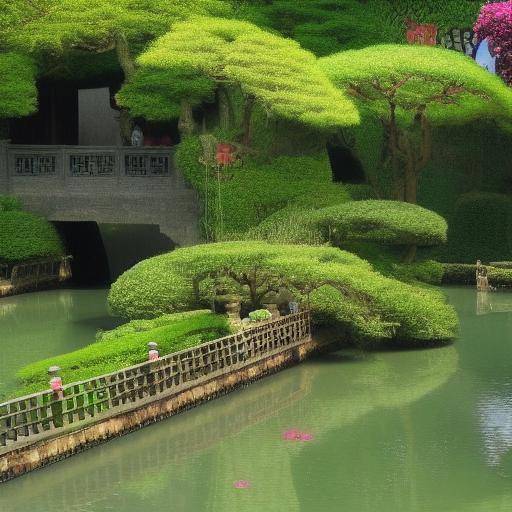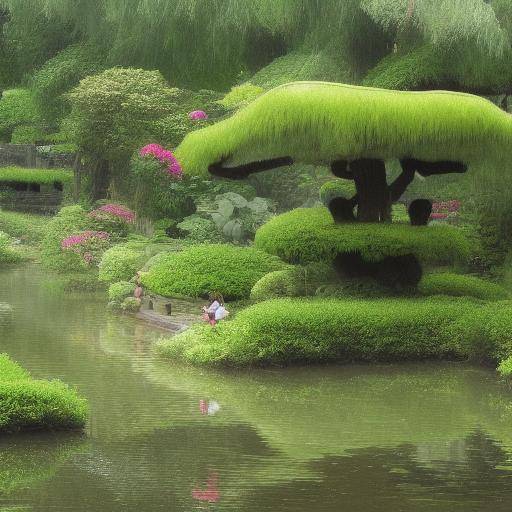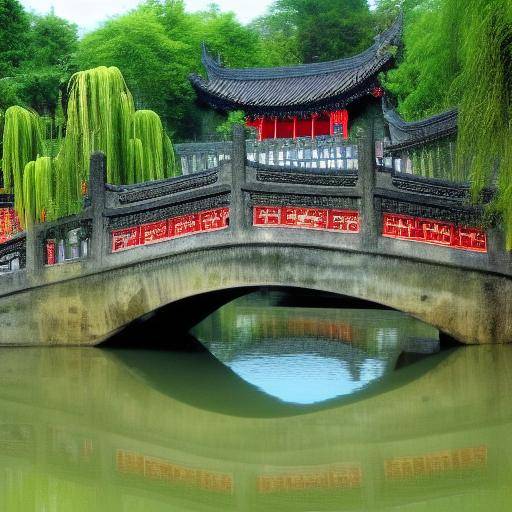
The Suzhou Gardens, located in China, are an impressive example that combines architecture, landscape and millennial culture. With centuries of history, these gardens have inspired artists, poets and nature lovers throughout generations. In this article, we will explore in detail the beauty and relevance of the Suzhou Gardens, as well as their influence on landscapes worldwide.
Introduction
The Suzhou Gardens, listed as a World Heritage Site by UNESCO, represent an exemplary art of Chinese landscape. These gardens reflect the harmony between human beings and nature, and their meticulous design makes them unique masterpieces. Through this article, we will discover the history, evolution and influence of these gardens, as well as their meaning in the context of landscaping.
History and Background
The Suzhou Gardens have their roots in the Ming Dynasty, which ruled China between 1368 and 1644. During that period, the aristocracy and the cultural elite showed interest in the art of landscape and gardening, which led to the creation of these gardens as private shelters of natural beauty.
Over the centuries, the design of the Suzhou Gardens has been influenced, adapting to the changing aesthetic trends and functional needs of its owners. The gardens incorporate traditional architectural elements, such as pavilions, bridges and walkways, in perfect harmony with the surrounding vegetation, creating an atmosphere of serenity and contemplation.
Detailed Analysis
The influence of the Suzhou Gardens in landscaping transcends their physical borders. These gardens have inspired landscape designers, architects and urbanists around the world, affecting the creation of urban green spaces and the planning of natural and artificial environments.
Chinese landscaping, rooted in traditional philosophy and aesthetics, has become a topic of global study and admiration. The deep connection with nature, the balanced symmetry and the use of elements such as water, stone and vegetation make the Suzhou Gardens an inexhaustible source of inspiration for contemporary design.
Full review
To fully understand the impact of the Suzhou Gardens, it is crucial to examine their practical application in different contexts and their influence in different disciplines. The way these gardens integrate into the urban environment, landscape planning and modern architecture shows their adaptability and timeliness.
Contemporary landscaping benefits from accumulated wisdom over the centuries by the artisans and designers of Chinese gardens. Thus, the underlying principles of harmony, balance and fluidity become fundamental tools for creating sustainable and aesthetically attractive environments.
Comparative analysis
Compare Suzhou Gardens with other outstanding examples of landscaping in China and the world allows us to appreciate their unique qualities and their differential impact. While the Chinese imperial gardens celebrate splendour and majesty, the Suzhou Gardens focus on intimate contemplation and delicate harmony.
Western landscaping, while following fundamental principles shared with the Chinese approach, tends to favour formal symmetry and geometric management, in contrast to the spontaneity and naturality of the Suzhou Gardens. The combination and comparison of these perspectives offer an enriching vision of landscape art.
Practical Tips and Tips
If you are interested in applying the principles of Chinese landscaping in your own environment, consider integrating elements such as small ponds or lakes, curved wooden bridges, and a careful selection of trees and bushes that reflect traditional Chinese flora. Subtleness and meticulousness in the disposition of architectural and natural elements are key to achieving a harmonious and serene effect.
In addition, it is important to remember that the Suzhou Gardens are not only an example of aesthetic beauty, but also of functionality. The combination of rest areas, walking paths and spaces for peaceful contemplation shows that landscapes can serve multiple purposes, from recreational to spiritual.
Industry Perspectives and Expert Reviews
Gathering different perspectives of experts in landscape and architecture allows us to understand the continuing importance of the Suzhou Gardens in the creation of contemporary green spaces. Experts highlight the need to preserve and promote the aesthetics and functionality of these gardens, while adapting to modern demands and challenges.
The generalized view is that the Suzhou Gardens act as a timeless reminder of the importance of the harmonious relationship between human beings and nature, and serve as a beacon of inspiration for designers and urbanists today.
Case Studies and Practical Applications
The Suzhou Gardens have been the subject of numerous case studies that explore their impact on human well-being, sustainable urban planning and the preservation of cultural heritage. These research reveals how the influence of gardens extends to the physical and mental health of people who interact with them, while promoting the conservation of biodiversity and history.
The practical applications of the principles of landscape design and architecture inherited from the Suzhou Gardens not only embellish the urban spaces, but also promote a more balanced and resilient lifestyle, fostering harmony between the community and its natural environment.
Future Trends and Predictions
As we enter the future of landscape and the influence of the Suzhou Gardens, we observe a renewed interest in the harmonization of modern environments with the surrounding nature. The adaptation of Chinese design principles to contemporary practices promises to open new opportunities for environmental sustainability and human well-being.
The predictions point to a greater integration of natural elements in urban areas, as well as the implementation of design concepts that encourage the connection with nature, following the legacy of the Suzhou Gardens.
Conclusion
The Suzhou Gardens, with their rich history, their lasting influence and aesthetic appeal, represent a jewel of the Chinese landscape that has transcended geographical and cultural boundaries. His legacy remains a source of inspiration and innovation for contemporary landscapes, reminding us of the importance of harmony and integrity in the creation of natural and urban environments.
This article has explored in depth the Suzhou Gardens, their impact on landscapes and their relevance globally. We hope that it will serve as an informative and stimulating resource for all those interested in understanding the beauty and meaning of these emblematic gardens.



